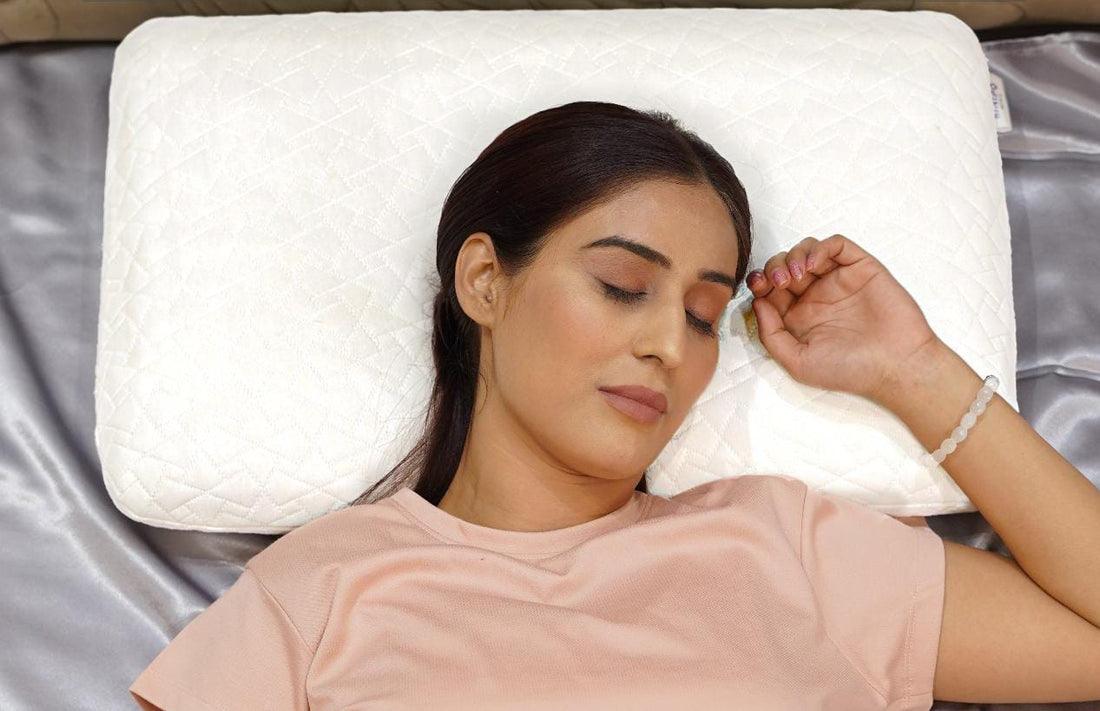
How Memory Foam Pillows Help Alleviate Neck and Back Pain
Share
Introduction
Neck and back pain is a very common situation affecting millions of people across the world, largely due to a bad position of sleeping, bad place of the body or improper support during sleep. Memory foam pillows have become the most innovative product to change the approach taken towards ergonomics in sleep. As they are designed to adopt the shape of a human body, these pillows help in providing personalized support towards alleviating every kind of pain.
Understanding Memory Foam
Memory foam is a high-density polyurethane material developed by NASA in the 1960s to improve seat cushioning and crash protection. The material's defining characteristics include:
Viscoelasticity: It shapes the body by responding to pressure and body heat.
Slow Response Time: Memory foam retains its shape for a while after pressure has been removed, providing continuous support.
Density Variation: Higher-density foams give firmer support, while the lower-density ones are softer and more flexible.
These properties make it possible for memory foam to conform accurately to the curves of the body, ensuring that proper support and alignment are provide.
How Memory Foam Pillows Relieve Neck Pain

1. Encourages Proper Spinal Alignment
The cervical spine, which is the upper portion of the spine, is most frequently misaligned, which results in neck pain. Memory foam pillows are designed to do the following:
Maintain a right posture for your head, neck, and spine.
Fill the gap between the head and the mattress, providing enough support to the natural curvature of the neck.
Prevent the head from tilting too far forward, backward, or to the sides during sleep.
This alignment helps reduce the stress on the cervical muscles and ligaments, reducing the likelihood of waking up with a stiff or sore neck.
2. Pressure Points Reduction
Memory foam pillows lessen pressure points by uniformly distributing the weight of the head and neck. Through the reduction of pressure, they:
Prevent muscle tension and stiffness.
Enhance blood movement around the neck place, thus reducing inflammation and improving healing.
3. Changes Multiple Sleeping Positions
Whether you’re a back, side, or stomach sleeper, memory foam pillows cater to all sleeping styles:
Back sleepers: Support the spine's natural curvature while cradling the neck.
Side sleepers: Make sure the head and shoulder are properly aligned by filling the space between them.
Stomach Sleepers: Offer minimal elevation to avoid overextending the neck.
This adaptability ensures that users can maintain a comfortable and supportive sleeping posture, no matter their perfect role.
4. Offers Consistent Support
Traditional down or cotton pillows tend to flatten out and lose their supportiveness over time. Memory foam pillows, on the other hand:
To provide strong support all through the night, keep them firm and in shape.
Offer a created sleeping surface that adjusts to the user's body every time they lie down.
How Memory Foam Pillows Relieve Back Pain
1. Supports Natural Spine Curvature
Most cases of back pain arise from a failure to provide the lumbar spine with the necessary support. Memory foam pillows assist in these ways:
When used in conjunction with a proper mattress, it supports the natural "S" curve of the spine.
Even weight distribution across the back will discourage localized pressure on the lumbar place.
If put under the knees when lying on one's back, a memory foam pillow can even ease stress in the lower back due to decreased pulling on the spine.
2. Improves Sleep Posture
Bad sleeping posture can even make existing back pain worse or even create a problem that never existed before. Memory foam pillows:
It adapts to the shape of the body and helps to promote healthier sleeping position.
Decrease twisting or unnatural curving of the spine, which can cause strain and pain.
3. Stops Movement While Sleeping
Daily putting and turning at night exacerbate back pain. Memory foam pillows:
Provide a stable surface that limits unnecessary movement.
Help the body to stay in a supportive position all night long.
4. Helps Targeted Pain Relief
For people with localized back pain (e.g., from injuries or conditions like herniated discs), memory foam pillows can:
Use lumbar support while sitting or lying down.
Alleviate strain on specific areas by providing firm if gentle cushioning.
Additional Benefits of Memory Foam Pillows

1. Hypoallergenic Properties
Memory foam naturally fights dirt mites and allergens. As a result, the material is a perfect option for patients who are allergy and asthma sensitive. Good overall sleep will promote a person to be more recuperative over a neck or back pain.
2. Durability
The pillows that make use of memory foam will take longer than a lot of their alternatives since the support benefit stay for long.
3. Temperature Movement
Modern memory foam pillows usually include cooling technologies like gel-infused foam or breathable covers to prevent overheating. Thus, this means that there is a great comfort in sleep that is need to manage pain.
Tips on the Effective Use of Memory Foam Pillows
Choose the Right Pillow Size and Shape:
Contoured memory foam pillows are good for neck support.
Standard rectangular pillows are useful for overall back support.
Place the Pillow Appropriately:
For neck pain, maintain the support of the pillow to the natural curved foundation of the neck.
For back pain, position the pillow under the knees for back sleeping people or under the knees of the side sleeping people.
Dust the Pillows Clean:
Use a washable cover over the pillow.
Aerate the pillows daily to avoid developing an odor.
Get it with a Bliss Ergonomic Mattress:
When combined with the advantages of a memory foam pillow, a memory foam mattress provides fantastic full-body support.
When to Replace a Memory Foam Pillow

Even though memory foam pillows are durable, they should be replaced every 2–3 years to ensure optimal support. The following are indicators that a replacement is needed:
Loss of shape or firmness.
Persistent pain despite using the pillow correctly.
Who Should Use Memory Foam Pillows?
Memory foam pillows are beneficial for:
People with chronic neck or back pain.
Those recovering from surgery or injuries.
people with arthritis, herniated disks, or sciatica
pregnant women
those who want a better quality of sleep and posture
Conclusion
Memory foam pillows are scientifically designed solutions for helping in the eradication of neck and back pain. Its ability to take the contours of the body, provide strong support, and encourage proper alignment makes it a necessity for improved quality of sleep and overall well-being. Memory foam pillows not only ease pain by solving the main cause of pain but addition work a deterrent to future pains. Thus, every people looking to make a good investment for a lifetime of comfort and health finds these pillows useful.
